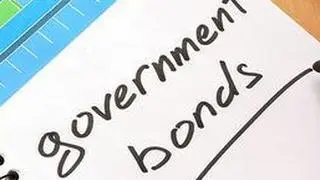The Bank of Japan kept the monetary policy steady and maintained its optimistic price forecasts on Tuesday, signalling its confidence that a steady economic recovery will accelerate inflation to its 2 per cent target without additional stimulus.
Markets are focusing on what BOJ Governor Haruhiko Kuroda has to say on US President Donald Trump’s protectionist trade stance, particularly with Trump taking direct aim at Japan’s powerful auto industry - a mainstay of its economy.
As widely expected, the BOJ maintained a pledge to guide short-term interest rates at minus 0.1 per cent and the 10-year government bond yield to around zero per cent.
It also left unchanged a loose commitment to buy government bonds at the current pace so the balance of its holdings rise at ¥80 trillion ($705 billion) per year.
“I expect inflation to pick up, but this will lag economic growth,” said Hiroshi Miyazaki, senior economist at Mitsubishi UFJ Morgan Stanley Securities.
“The BOJ can afford to stay on hold because it has already pushed out the timing for (meeting) its inflation target a lot.”
In a quarterly review of its forecasts, the BOJ raised its growth estimates for the fiscal year beginning in April and the following year, nodding to brightening prospects for exports.
But the central bank left unchanged its already optimistic inflation forecasts for the coming years despite external factors that push up prices, such as a rebound in oil prices and rising import bills from a weak yen.
“Risks to both economic activity and prices are skewed to the downside,” the BOJ said in the quarterly forecast report.
“The momentum for achieving our 2 per cent inflation target is maintained, but lacks strength,” it said.
With domestic demand still weak, many central bankers remain wary on whether price rises driven by external factors could transform into sustained price growth.
The BOJ said it expects inflation to hit 2 per cent target by around March 2019, unchanged from its forecast in November.
New challenges
Japan’s growth remained anaemic in the first half of last year as consumption slumped. But a pick-up in global demand has helped exports recover, giving rise to market bets the BOJ’s next move may be to hike - not cut - rates.
Data released on Tuesday showed factory output rose for a second straight month in December as automakers boosted production.
“If the economy continues a steady recovery in coming months, we expect the BOJ’s next step to be a tightening, not an easing, of policy,’’ said Yuichiro Nagai, an economist at Barclays Securities Japan.
But uncertainty over Trump’s policies is emerging as a new headache for Japanese policymakers worried about a resurgence of the yen, which hurts exports.
The dollar slumped against the yen on Monday, which benefited from its safe-haven status as Trump’s tough stance on migration rattled investors and curbed the risk appetite.
Kuroda could also seek at his post-meeting briefing to allay market concerns the BOJ may taper its massive monetary stimulus sooner than expected.
Such speculation emerged after the BOJ drove up bond yields last week by abruptly skipping a much-anticipated auction to buy short-term bonds.
Global bond yields have risen on expectations that Trump’s pledge of big infrastructure spending could lead to higher US inflation, putting upward pressure on Japanese long-term rates.
The BOJ was forced to revamp its policy last September into one targeting interest rates, rather than the pace of its money printing, after more than three years of aggressive bond buying failed to accelerate inflation to its 2 per cent target.
But the new framework, dubbed “yield curve control” (YCC), has brought new challenges. With markets accustomed to huge bond-buying by the BOJ, any sign of slowdown in its purchases has prompted market speculation it could withdraw stimulus.








Comments
Comments have to be in English, and in full sentences. They cannot be abusive or personal. Please abide by our community guidelines for posting your comments.
We have migrated to a new commenting platform. If you are already a registered user of TheHindu Businessline and logged in, you may continue to engage with our articles. If you do not have an account please register and login to post comments. Users can access their older comments by logging into their accounts on Vuukle.